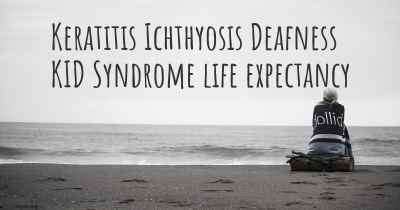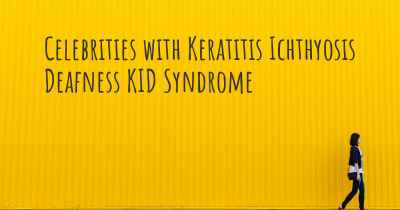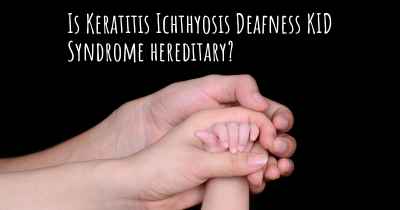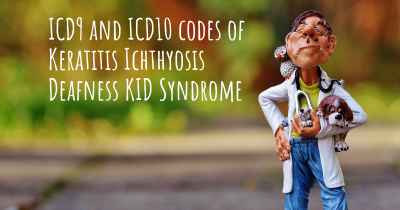Living with Keratitis Ichthyosis Deafness KID Syndrome. How to live with Keratitis Ichthyosis Deafness KID Syndrome?
Can you be happy living with Keratitis Ichthyosis Deafness KID Syndrome? What do you have to do to be happy with Keratitis Ichthyosis Deafness KID Syndrome? Living with Keratitis Ichthyosis Deafness KID Syndrome can be difficult, but you have to fight to try to be happy. Have a look at things that other people have done to be happy with Keratitis Ichthyosis Deafness KID Syndrome
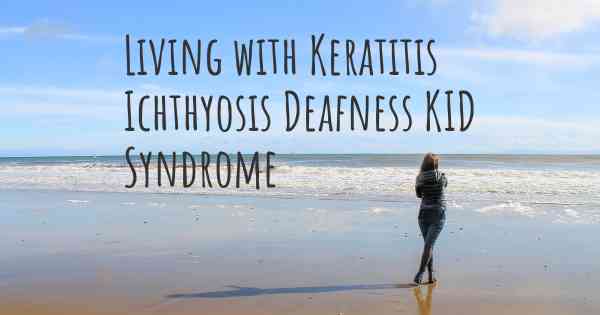
Living with Keratitis Ichthyosis Deafness (KID) Syndrome
Keratitis Ichthyosis Deafness (KID) Syndrome is a rare genetic disorder that affects the skin, eyes, and ears. It is characterized by the presence of dry, scaly skin (ichthyosis), inflammation of the cornea (keratitis), and hearing loss (deafness). Living with KID Syndrome can present unique challenges, but with proper care and support, individuals with this condition can lead fulfilling lives.
Medical Management
Managing the medical aspects of KID Syndrome is crucial for maintaining overall health and well-being. It is important to work closely with a team of healthcare professionals, including dermatologists, ophthalmologists, and audiologists, who specialize in treating rare genetic disorders.
Skincare: The dry, scaly skin associated with KID Syndrome requires diligent skincare. Regular moisturizing with emollients and gentle exfoliation can help manage the symptoms. It is essential to avoid harsh soaps and hot water, as they can further dry out the skin. Dermatologists can provide specific recommendations tailored to individual needs.
Eye Care: Regular eye examinations are necessary to monitor and manage keratitis. Lubricating eye drops or ointments may be prescribed to alleviate dryness and reduce the risk of corneal damage. Protecting the eyes from irritants and trauma, such as wearing sunglasses and avoiding dusty environments, is also important.
Hearing Support: Individuals with KID Syndrome often experience varying degrees of hearing loss. Audiologists can assess hearing abilities and recommend appropriate interventions, such as hearing aids or cochlear implants. Learning sign language or lip-reading can also enhance communication and improve quality of life.
Psychosocial Support
Living with a rare genetic disorder like KID Syndrome can be emotionally challenging. It is essential to seek psychosocial support to cope with the unique experiences and potential feelings of isolation.
Support Groups: Connecting with others who have KID Syndrome or similar conditions can provide a sense of belonging and understanding. Support groups, either in-person or online, offer opportunities to share experiences, exchange advice, and find emotional support.
Counseling: Professional counseling or therapy can help individuals and their families navigate the emotional impact of KID Syndrome. It provides a safe space to express feelings, develop coping strategies, and address any psychological challenges that may arise.
Education and Advocacy: Raising awareness about KID Syndrome within the community, schools, and workplaces can foster understanding and acceptance. Education can help dispel misconceptions and promote inclusivity for individuals with KID Syndrome.
Adaptive Strategies
Adapting daily routines and environments can significantly improve the quality of life for individuals with KID Syndrome.
Skincare Routine: Establishing a consistent skincare routine that includes moisturizing and gentle exfoliation can help manage the symptoms of ichthyosis. Keeping the skin well-hydrated and protected from extreme temperatures is essential.
Eye Protection: Wearing sunglasses and using protective eyewear can shield the eyes from irritants and reduce the risk of corneal damage. Creating a clean and dust-free environment at home can also minimize eye-related complications.
Communication Strategies: For individuals with hearing loss, using visual aids like written communication, sign language, or assistive listening devices can facilitate effective communication. Informing friends, family, and colleagues about preferred communication methods can enhance understanding and interaction.
Living a Fulfilling Life
While KID Syndrome may present challenges, it does not define an individual's entire life. It is important to focus on abilities, strengths, and personal interests to lead a fulfilling life.
Education and Career: Pursuing education and career goals can provide a sense of accomplishment and independence. Identifying strengths and interests can help in choosing suitable career paths that accommodate individual needs.
Hobbies and Recreation: Engaging in hobbies, sports, or creative activities can bring joy and fulfillment. Exploring adaptive options, such as adaptive sports or assistive technology, can open up new possibilities.
Supportive Relationships: Building and maintaining supportive relationships with family, friends, and peers is crucial. Surrounding oneself with understanding and accepting individuals can provide emotional support and a sense of belonging.
Living with Keratitis Ichthyosis Deafness (KID) Syndrome requires a multidimensional approach that encompasses medical management, psychosocial support, adaptive strategies, and a focus on personal fulfillment. By seeking appropriate care, connecting with others, and adapting to individual needs, individuals with KID Syndrome can lead meaningful lives.
